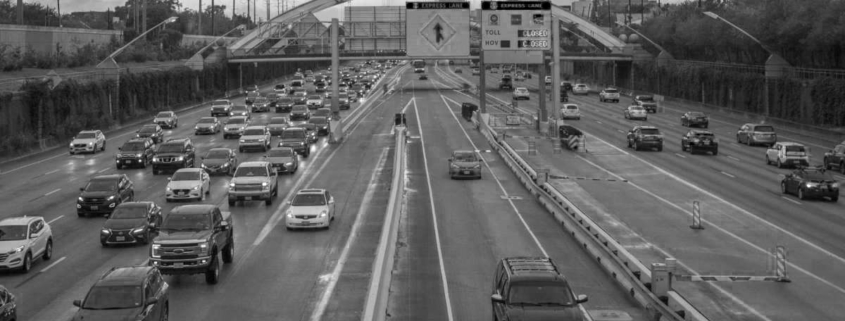Transportation Future: From Freeways to Scooters, Transit Will Get Disrupted
In most ways, 2020 transportation in Houston will only be incrementally different from today: the completion of the U.S. 290 expansion, new toll lanes down the middle of Texas 288, the extension of the Texas 249 toll road beyond Tomball toward College Station, the next segments of the Grand Parkway 170-mile mega-loop. And of course there’s the one constant in Houston over the last 70 years: the never-ending widening of the Gulf Freeway.
The great redevelopment of Interstate 45 and the tangle of downtown freeways will only have just begun, and although Texas Central originally forecast 90-minute high-speed rail service between Dallas and Houston in 2020, that date has almost certainly slipped since construction has not yet begun.
On a smaller scale, we’ll see the completion of 50 new miles of high-comfort bikeways as well the redevelopment of Bagby Street downtown into a “complete street” with enhanced pedestrian and biking amenities connecting the theater district with parks and City Hall.
Rapidly growing dockless bike and scooter services will likely come to Houston, making it much easier to make short distance urban trips and increasing demand for these bikeways and complete streets.
What’s far more exciting is that 2020 will kick off the greatest decade of transportation technology disruption since the invention of the car itself. We’ve already seen the beginnings with the rise of Uber and Lyft shared rides, which have been challenging transit ridership nationally. Autonomous vehicles will make these services even more affordable and transform cities in all sorts of ways with increased safety, less congestion, lower parking needs enabling all sorts of urban densification and redevelopment, and increased exurban development as long commutes become more tolerable (even more radically, Uber has begun testing autonomous drone air taxis to allow us to soar over what congestion remains — at a price).
Houston TxDOT is already preparing for this autonomous future with a strategy of next-generation HOV lanes called MaX (Managed eXpress) Lanes moving the maximum number of people at maximum speed from across our region to all of our major job centers, including high-speed autonomous buses from METRO.
In the commute of the future, you’ll be able to take a nonstop autonomous ride safely at high-speed (possibly up to 100-plus-mph) in protected MaX Lanes directly to your job center where it will circulate you right to your building, while autonomous shared-ride services will get you around for short trips during the day. And unlike driving, you’ll be able to be productive or entertained on your phone, tablet or laptop the whole time. To paraphrase the immortal Timbuk 3: the transportation future’s so bright, we’ll have to wear shades (probably with augmented reality).
This article first appeared in the Houston Chronicle
Tory Gattis is a founding senior fellow at The Center for Opportunity Urbanism.



